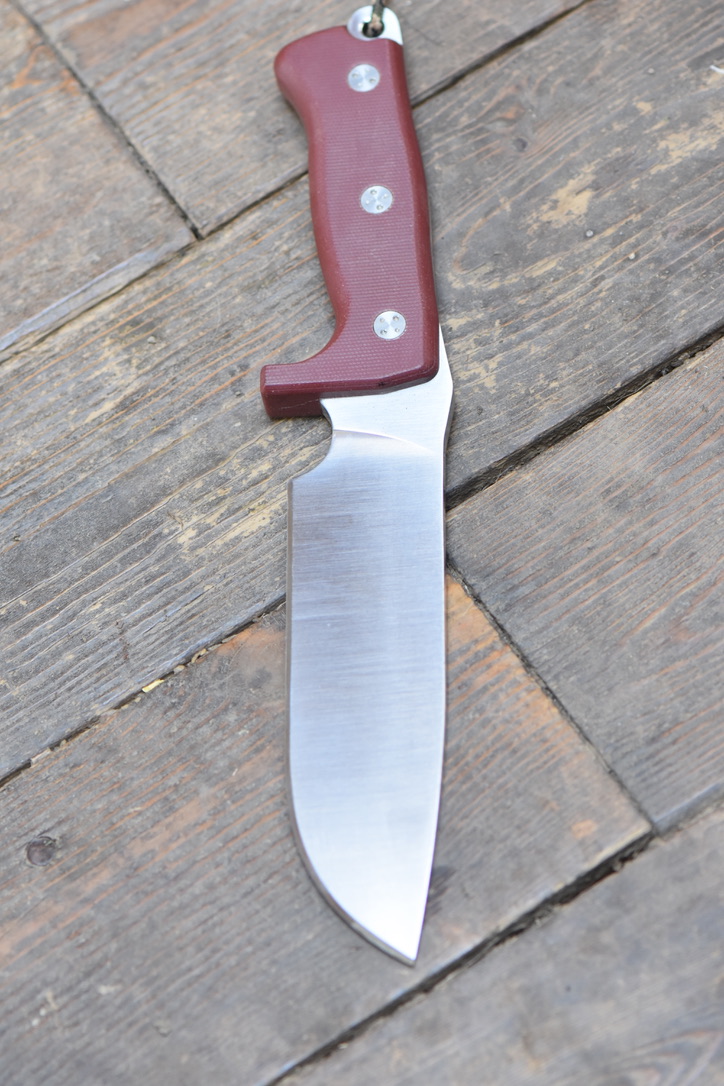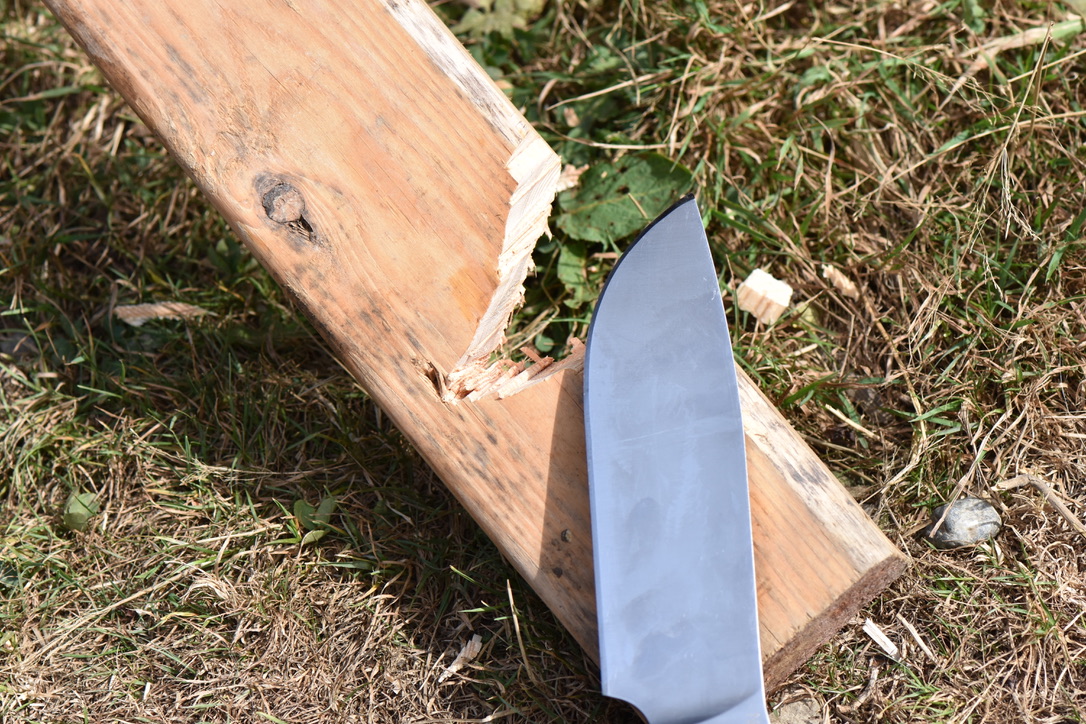BluntCut MetalWorks
Knifemaker / Craftsman / Service Provider
- Joined
- Apr 28, 2012
- Messages
- 3,464
O1 HT 4.0 vs Control/baseline ht - A8Mod and 8670 - chopping test. Edge: Edgepro, 18dps, 600 diamond grit
Dried Eucalyptus: All passed (edges didn't reflected sun light)
African Blackwood:
A8M=dulled and area of minor rolled.
8670=dulled (apex reflects thin band of light and smooth to touch).
O1 = minor ripple (light reflected against edge bevel shows curvature instead of flat)
Dried cow femur bone:
A8M=dulled and minor roll+ripple
8670=dulled and micro roll+ripple
O1=micro roll+ripple
Chop 16D nail:
A8M=crushed and chipped * Surprised to see a very large chip at 60rc *
*
8670=crushed/rolled
O1=crushed/rolled

I've HT 4.0 52100 and 80CrV2 with same profile but not ready for testing yet.
Dried Eucalyptus: All passed (edges didn't reflected sun light)
African Blackwood:
A8M=dulled and area of minor rolled.
8670=dulled (apex reflects thin band of light and smooth to touch).
O1 = minor ripple (light reflected against edge bevel shows curvature instead of flat)
Dried cow femur bone:
A8M=dulled and minor roll+ripple
8670=dulled and micro roll+ripple
O1=micro roll+ripple
Chop 16D nail:
A8M=crushed and chipped * Surprised to see a very large chip at 60rc
8670=crushed/rolled
O1=crushed/rolled

I've HT 4.0 52100 and 80CrV2 with same profile but not ready for testing yet.







